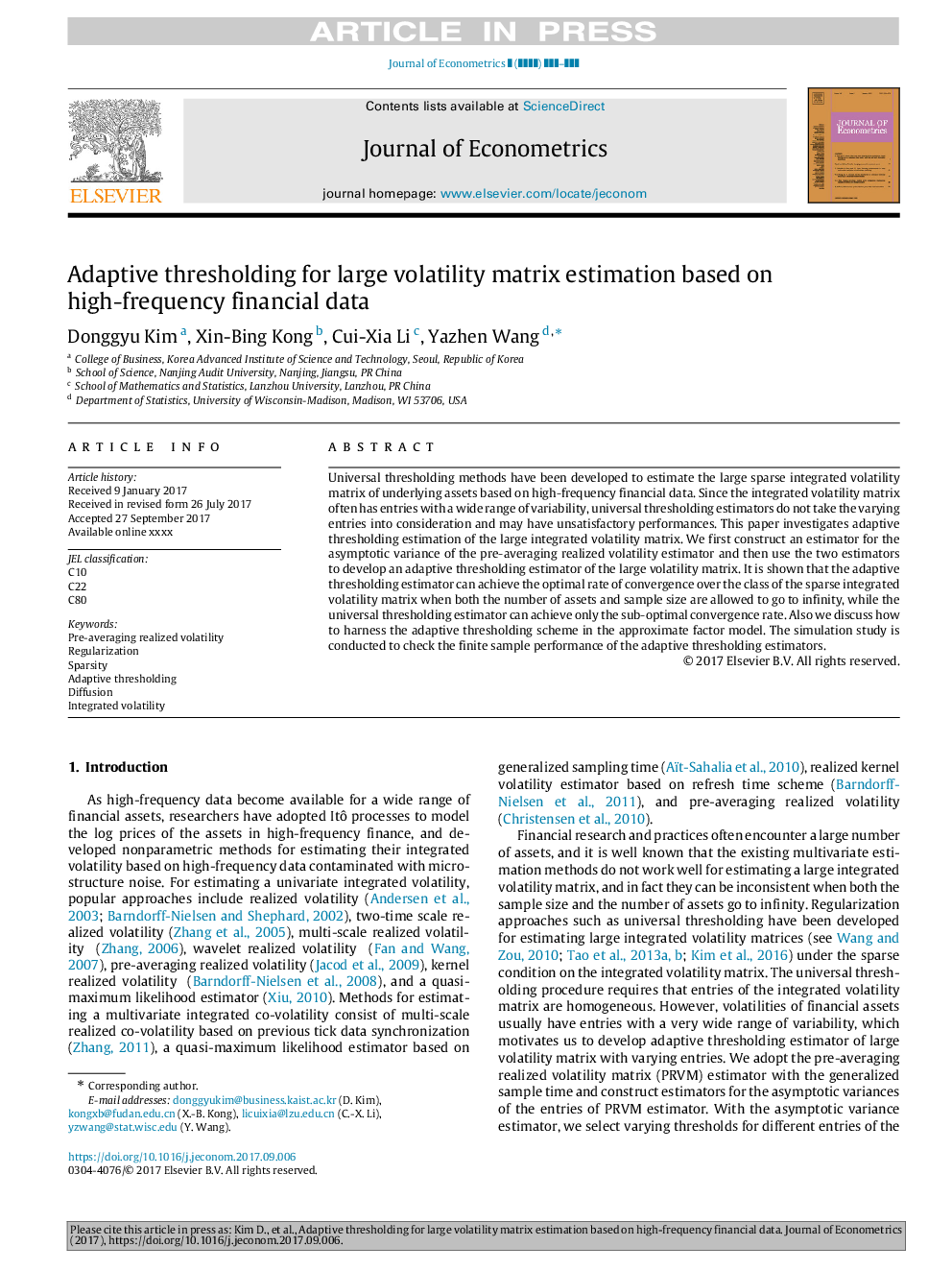| Article ID | Journal | Published Year | Pages | File Type |
|---|---|---|---|---|
| 7358073 | Journal of Econometrics | 2018 | 11 Pages |
Abstract
Universal thresholding methods have been developed to estimate the large sparse integrated volatility matrix of underlying assets based on high-frequency financial data. Since the integrated volatility matrix often has entries with a wide range of variability, universal thresholding estimators do not take the varying entries into consideration and may have unsatisfactory performances. This paper investigates adaptive thresholding estimation of the large integrated volatility matrix. We first construct an estimator for the asymptotic variance of the pre-averaging realized volatility estimator and then use the two estimators to develop an adaptive thresholding estimator of the large volatility matrix. It is shown that the adaptive thresholding estimator can achieve the optimal rate of convergence over the class of the sparse integrated volatility matrix when both the number of assets and sample size are allowed to go to infinity, while the universal thresholding estimator can achieve only the sub-optimal convergence rate. Also we discuss how to harness the adaptive thresholding scheme in the approximate factor model. The simulation study is conducted to check the finite sample performance of the adaptive thresholding estimators.
Related Topics
Physical Sciences and Engineering
Mathematics
Statistics and Probability
Authors
Donggyu Kim, Xin-Bing Kong, Cui-Xia Li, Yazhen Wang,
